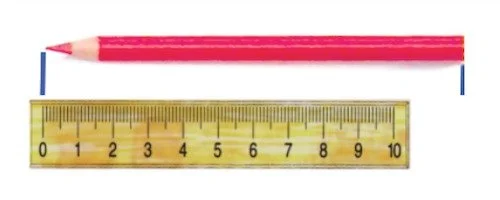Planning for Excellence in Tajikistan: Knowledge & Skills Charts
This blog is part of a series that highlights the education best practices that are the foundation of Chemonics and One World’s work together around the globe. Today’s example details the first step when planning for excellence and comes from a “Train the Trainer” workshop in support of the USAID Learn Together Activity (LTA) in Tajikistan, where instructional leaders from multiple regions gathered to study techniques for improving classroom culture. Next up, we’ll dig into Planning for Excellence: Anticipating & Addressing Misconceptions.
In February of 2023, the World Bank reported that only 55% of second graders and 41% of fourth grade students in Tajikistan can meet grade level benchmarks in reading. In circumstances like these, teachers can often feel overwhelmed trying to teach grade level standards while closing gaps from previous years. Luckily, teachers in Tajikistan have an unwavering belief in the potential of their students and maintain high expectations for their academic success. This, however, is only half the equation.
In addition to having a positive mindset, teachers need to have the tools to plan and deliver effective lessons that meet students where they are while giving them access to grade level content. To develop these skills in teachers, principals and other instructional leaders in Tajikistan participated in a USAID Learn Together Activity focused on articulating the challenge teachers face as precise questions with applicable solutions. Below is an example of their work.
The Problem
Creating lessons with the right levels of support requires teachers to answer two crucial questions:
1. What does academic excellence look like for my students?
2. What will it take for my students to achieve it?
A Solution: Knowledge & Skill Charts
One way to tackle the challenge these two questions pose is through the creation of a Knowledge & Skill Chart. Knowledge & Skill Charts are planning tools grounded in the concept of productive struggle, a brain research term that describes how students learn best when engaged in challenging tasks that require perseverance and flexible thinking. They help teachers to unearth what students need to know and do in order to show mastery of any concept and can help them to anticipate potential misconceptions based on what they know about their students.
The first step in completing a Knowledge & Skills chart is to review the objective of the lesson (or in the case of educators in Tajikistan, the purpose of education) in order to determine what mastery of it looks like. The best way we’ve found to do this is to ask what’s the most rigorous task or question that students can grapple with in order to demonstrate mastery of the objective? We call this the Most Productive Struggle.
Next, the Most Productive Struggle is analyzed to determine what knowledge students must have and what skills they must show to accurately answer the question or to complete the task.
An Example from Tajikistan
Below is a math example principals and instructional leaders created for Grade 1 math.
|
Knowledge & Skills Chart |
|
|
Learning Outcomes: Can use non-standard and standard units to measure, compare and organize. Lesson Objectives: Can measure pieces with a ruler. Describe the given piece and write the length measurement in centimeters (cm). |
|
|
Most Productive Struggle: How many cm long is the pencil?
|
|
|
Knowledge |
Skills |
|
Students will experience measuring objects by counting conventional units of lengths |
The students will be able to determine multiple items in his immediate environment that are important to have accurate measurements - (their room, bed, clothes, wardrobe…) |
|
A ruler is one of the tools for measuring length |
Determines the length of different items in their classrooms by working with a ruler (table, door width and height, their shoe length, and their bag height) in Centimeters |
|
To measure the length of a piece or object, the ruler must be set from zero |
Starts measuring at the zero mark |
|
The last number mark on the ruler is the length of the piece or object |
Measures the piece, determines its length and writes it down |
|
Length measurement can be indicated in centimeters (cm) |
Indicates the length of a piece or object in centimeters |
|
From point 0 to 1 of the ruler is 1 cm |
Recognizes the length of 1 cm |
|
A multi-step process is necessary when measuring a piece or object that is longer than the ruler |
|
With a Knowledge & Skill Chart in hand, teachers feel confident in their ability to answer that first question: What does academic excellence look like for my students? Participants in the USAID Learning Together Activity (LTA) workshop in Tajikistan noted that this process allowed them to have a clearer picture of the most essential skills of a lesson and know which areas to emphasize and prioritize throughout it.
In our next blog, we will discuss how teachers can also use Knowledge & Skills Charts to create individualized plans that allow every student to master the content and close the gaps in their learning.
Knowledge & Skills Chart Key Wins
Closing the achievement gap will never be possible unless we provide students with rigorous grade level work.
Targeting the Most Productive Struggle associated with a particular learning objective gives teachers, especially those new to the profession, a precise goal for each lesson.
Understanding the knowledge and skills necessary to make a struggle productive leads to teachers who make every moment count and students who are purposeful and motivated.
Written by
Zahina Nazarova, USAID Learn Together Activity
Samira Shibli, One World Network of Schools


